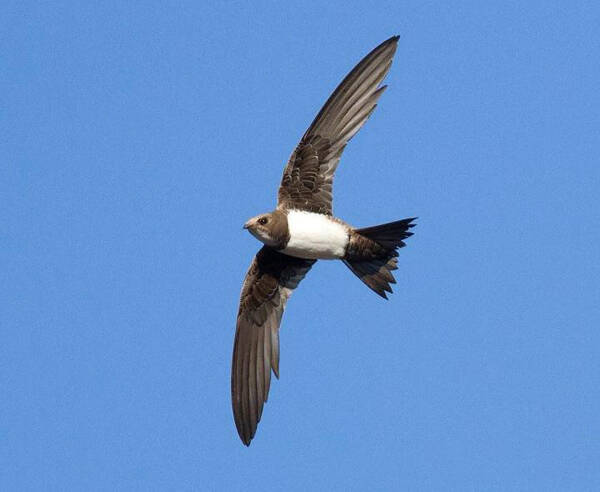Tachymarptis melba
IUCN
LCBasic Information
Scientific classification
- name:Tachymarptis melba
- Scientific Name:Tachymarptis melba
- Outline:Climbing birds
- Family:Apodidae Apodidae Apoda
Vital signs
- length:21cm
- Weight:
- lifetime:
Feature
Characteristically, the white throat and chest are separated by a dark brown horizontal band.
Distribution and Habitat
There is a confirmed record in Xinjiang, China, and possibly in southeastern Tibet. Abroad, in Africa, southern Western Palearctic, Central Asia, the Middle East, West Asia, and India.
Found in open mountainous areas, woodlands, and plains. Wing flaps slower than other swifts.
Appearance
A large swift with long wings. Dark brown upper body, white lower body with dark brown breast band, slightly forked tail. Brown iris, black bill, black feet.
Details
The Alpine Swift is a species of swift. Swifts are air-dwelling birds that often fly in groups for long periods of time, preying on insects in the air. They are similar to the common house swallows, but belong to a different order in evolution. They rarely live in trees, but rest on cliffs and build nests in rocks, caves and hollow trees. They are small in size, with a very small beak and a wide base, which is suitable for aerial predation. The wings are narrow and long, and when the wings are folded, they extend far beyond the tail end. The tail is forked or square, and some have thorns at the end. The legs are short and weak, making it extremely difficult for them to stand or rest on the ground. Males and females are similar.

Alpine Swifts live in mountainous areas. They have a relatively slow wingbeat frequency. Swifts have ten long primary feathers and a set of short secondary feathers on their wings. Their narrow sickle-shaped wings determine their flight mode, allowing them to flap their wings more quickly and, more importantly, save a lot of energy when gliding. Swifts have amazing power for their small feet, and their sharp claws are able to grip vertical surfaces well. In addition, the high hemoglobin content in their blood enables them to optimize oxygen delivery when oxygen levels are low. The beak of a swift is short and relatively weak, but its mouth is wide open, allowing it to easily catch flying insects in flight. All swifts feed only on insects and spiders, which they catch mainly in mid-air. The main prey of swifts are bees, wasps and ants of the order Hymenoptera, flies of the order Diptera, bugs of the order Hemiptera, and beetles of the order Coleoptera.
The nest of a swift is made of twigs, buds, moss and feathers bonded together by sticky saliva. The nest is built on the wall of a cave or the inner wall of a chimney, in a rock crevices, or in a hollow tree. Swifts have a relatively long lifespan and are very loyal to their breeding grounds and mates. Even in areas where they often breed, the air is only abundant for 12 to 14 weeks, so the breeding time of swifts is very rapid and short.
Since swifts rely on preying on flying insects, they must spend the winter in areas where the temperature can ensure that there are enough insects flying in the air. Therefore, when the weather turns cold in their temperate distribution area, most species retreat southward. Long-distance migration is no problem for swifts. Among all land birds, swifts are the most adept in the air. Even if they are not migrating, they will fly hundreds of kilometers every day when foraging. In the experiment, the breeding mountain swifts successfully flew 1,620 kilometers to return to their nesting site in 3 days.








